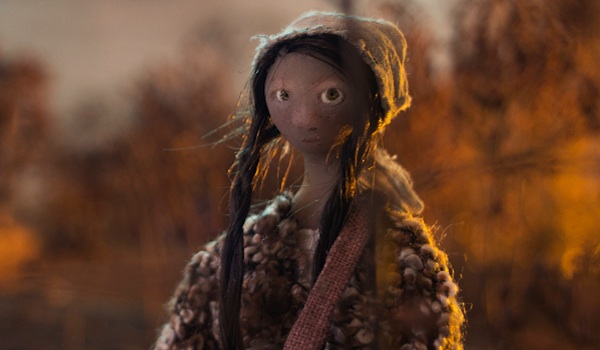
Granny’s Dancing on the Table (2015) Film Review from the 59th Annual San Francisco International Film Festival, a movie directed by Hanna Skold, and starring Blanca Engstrom, Lennart Jahkel, Karin Bertling, and Briten Granqvist.
Despite the festive-sounding title, Hanna Skold’s Granny’s Dancing on the Table is anything but. For that matter, although there is indeed a granny in the film, there isn’t much in the way of dancing, much less dancing on top of tables. Instead, the purpose of the title is to do little more than be ironic, as the film it denotes is about as far from a celebration of family and one’s elders as you can get. On the contrary, it gives us a look at that most un-family friendly of things: child abuse. To top it all off, the abuse is seen through the eyes of it’s primary victim, young, defenseless Eini (Engstrom).
Now while we see things through Eini’s perspective, a good chunk of the movie isn’t actually spent relaying her day-to-day life. Much of the film’s running time is allocated to relaying her family’s dark, depressing history, a task handily accomplished through the use of dolls brought to life by stop-motion animation. Right away, this distinguishes the film from others that rely heavily on special effects: although the animation isn’t as smooth as that in, say, Jurassic World or even Inside Out, the quaint feel and jarring movement of the dolls contribute immensely to the movie’s melancholy sensibility.
Through the story of her grandmother (Bertling) and her aunt Lucia (Granqvist), Eini reveals that she is the youngest member of a family that has an almost genetic predisposition for quiet and a history of excessive deference to it’s patriarchs. Just as Eini must submit to her father’s (Jahkel) every pointless whim, he and Lucia had to obey her equally-tyrannical husband Harald when he was young. Like most of the characters in the film, Harald only appears in animated form, but one can sense the cold disinterest with which he regarded his wife and adopted son and see the physical abuse he inflicted upon them. Considering these factors, it is tempting to say that Eini’s grandmother was lucky to be banished from the household after giving birth to her father out of wedlock, especially after seeing the adventurous life she led.
As Eini conveys more details about her family’s sordid past and her grandmother’s exciting travels, slowly but surely she seems to grow discontent with the life her father has in mind for her. Overcoming her reserved nature, she begins to openly defy her father, ignoring repeated commands by him to stop chopping wood and sit down with him and even imagining that she cut her own hand off to spite him. Her desire to follow in the footsteps of her rebellious grandmother leads to her leaving both her father and her house behind. Resolving to end the oblique madness of her family once and for all, she builds a pile of scrap and lights it on fire, setting the entire forest ablaze as she makes her way to the nearest sign of civilization.
At times too inscrutable for it’s own good, Granny’s Dancing on the Table nevertheless succeeds in making incredibly-taciturn characters communicate both emotion and motivation. Such a feat is not easily accomplished, as the dearth of films that achieved comparable results attests to. The stop-motion scenes also stand out in a time of CGI and Flash animation, providing personality in addition to narrative. If you’re looking for quiet entertainment on a rainy day, look no further than Granny’s Dancing on the Table.
Rating: 7/10
Leave your thoughts on Granny’s Dancing on the Table and this review below in the comments section. For more film reviews, visit our Movie Review Page, our Movie Review Facebook Page, our Movie Review Google+ Page, and consider subscribing to us by Email, “following” us on Twitter, Tumblr, Google+ or “liking” us on Facebook for quick updates.